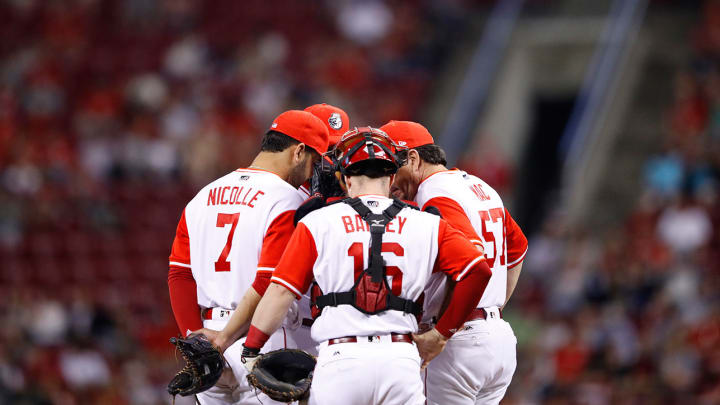With or Without the Players' Approval, MLB Intends to Implement Pitch Clock and Other Pace of Play Improvements in 2018

With negotiations on pace of play at an impasse, Major League Baseball has put its players on the clock. MLB intends to exercise its right under the Collective Bargaining Agreement to unilaterally impose a pitch clock and other changes for the 2018 season if no agreement is reached before owners meetings Jan. 30 in Los Angeles, according to a source familiar with those negotiations.
The most recent proposal by MLB to the players included:
• A 20-second pitch clock with the bases empty, similar to what has been used for three years in some minor leagues. First violations by a pitcher or batter would receive a warning. Subsequent violations would result in a ball charged to the count upon a violation by the pitcher or a strike charged upon a violation by the batter.
• A limit of six mound visits per game by players.
• A trigger mechanism for further change in 2019. If the average time of game remained at three hours or more in 2018—it was a record-long 3:05.11 last season—the pitch clock would be used for all pitches, including with runners on, in 2019.
After some progress on talks two weeks ago, players this week pushed back against the pitch clock, largely over concerns about the penalties associated with it. No negotiations are scheduled with the deadline less than two weeks away. The owners have the right under the CBA to implement rules changes after a year of negotiations. Those unilateral changes do not necessarily have to conform to their last proposal, but could, for instance, be even more sweeping.
The Pirates Could Have Been Contenders, but Ownership Cried Poverty and Betrayed Their Fans
Talks on pace of play have been sporadic ever since commissioner Rob Manfred announced last February in Arizona that he wanted a negotiated settlement with the players on speeding the pace of action, but that he was prepared to unilaterally implement changes if those talks stalemated.
Players and MLB officials met only once during the 2017 season on pace of game issues, a negotiation in Washington in August that was attended by about a dozen members of the Nationals and Marlins. The two sides spent a majority of the time discussing a pitch clock. Players offered other suggestions, such as shortening the commercial breaks between innings (MLB last year did experiment with 90-second breaks in a few games, shaving 35 seconds off the usual time, but the games did not move any faster because players weren’t ready to resume play so quickly) and the return of bullpen carts to ferry relievers into games (players were told the modern ballparks, with cozier seating arrangements, don’t easily facilitate their use).
Two weeks ago optimism grew between both sides when the players responded to several MLB proposals with one that included a pitch clock, not in 2018, but only in 2019 based on their own version of a trigger mechanism. But that optimism dissolved this week when players backed off their proposal.
According to a source, the players have raised objections to any proposals they believe “change how the game is played,” such as penalties that adjust the count. MLB officials countered that the pitch clock has been used since 2014 in the Arizona Fall League and since 2015 in Double A and Triple A without any such complaints. MLB estimates that about two-thirds of major league pitchers have experienced the pitch clock in the minors.
Analyzing Dustin Fowler's Lawsuit Against the Chicago White Sox
MLB began efforts to improve pace of play in 2015, when it installed countdown timers in ballparks to cut down on dead time between innings and required that hitters keep one foot in the batter’s box, with some exceptions. The effort did shave six minutes off the average time of game, but the gains were almost all realized in the first two months of the season, when MLB aggressively enforced the rule with warning letters and fines. But as enforcement waned, so did compliance. Some players went as far as to offer to pre-pay a season’s worth of fines rather than speed up their at-bats. MLB took the results of that effort that a fine system is not a meaningful way to change behavior when it comes to pace of play.
In the past two seasons MLB has put a 30-second limit on mound visits by managers or coaches and introduced intentional walks that need only to be announced, without requiring a pitcher to throw the four pitches. Its research shows that the dead time between pitches and action in a game, more so than the average time of game, is an impediment to attracting younger fans.
